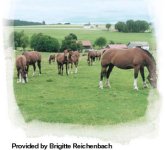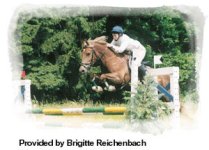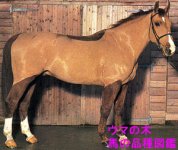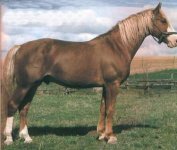♘امیرحسین♞
♘ مدیریت انجمن اسب ایران ♞
Frederiksborg
The Frederiksborg is the oldest horse breed in Denmark, and can be traced back to the horses of the royal stud at Frederiksborg. In its prime, this was one of the finest studs in Europe. During the eighteenth century the Frederiksborg was one of the world's most famous horse breeds. The breed was highly valued as a good school horse, reliable and elegant. It also made a high-class carriage horse and military charger. Frederiksborg horses were used to form or improve other breeds through the seventeenth, eighteenth and nineteenth centuries.
The breeding was directed to developing a riding horse, with beautiful and supple action, and a second type, larger, for pulling the royal carriages. For carriage horses, the color was of utmost importance in order to present a complete team of six to eight horses of exactly the same color.
Due to the popularity of this breed, it was exported in great numbers to many areas of the world. This left low numbers of the breed in its homeland. The breed began to decline, until by 1839 the stud was closed. A small number of pure individuals were maintained over the years by private breeders devoted to the breed.
Efforts were started in 1939 to reestablish the breed using Friesian and Oldenburg blood, and later Thoroughbreds and Arabs were used. Currently numbers are low. Connections between the Frederiksborg of today and the old stock are very slight. Up to 1920, the aim was to produce a light carriage horse that could also be used for farming. Then as motorization developed, the demand changed toward riding horses.
The Frederiksborg is a strong, attractive horse, always chestnut in color. Usually the mane and tail are a lighter, flaxen color. White markings on the face and/or legs are common. The head is well proportioned, with a straight or sometimes convex profile, pointed, mobile ears, and large, expressive eyes; the neck is of medium length, well proportioned and slightly arched and muscular; the withers are pronounced, broad and muscular. The back is short and straight; the croup rounded and broad; the chest high, full and deep; and the shoulder sloping and muscular. The legs are well muscled with strong, broad joints, good bone, and clearly defined tendons. The feet are small and tough.
Population Status: Rare
The breeding was directed to developing a riding horse, with beautiful and supple action, and a second type, larger, for pulling the royal carriages. For carriage horses, the color was of utmost importance in order to present a complete team of six to eight horses of exactly the same color.
Due to the popularity of this breed, it was exported in great numbers to many areas of the world. This left low numbers of the breed in its homeland. The breed began to decline, until by 1839 the stud was closed. A small number of pure individuals were maintained over the years by private breeders devoted to the breed.
Efforts were started in 1939 to reestablish the breed using Friesian and Oldenburg blood, and later Thoroughbreds and Arabs were used. Currently numbers are low. Connections between the Frederiksborg of today and the old stock are very slight. Up to 1920, the aim was to produce a light carriage horse that could also be used for farming. Then as motorization developed, the demand changed toward riding horses.
The Frederiksborg is a strong, attractive horse, always chestnut in color. Usually the mane and tail are a lighter, flaxen color. White markings on the face and/or legs are common. The head is well proportioned, with a straight or sometimes convex profile, pointed, mobile ears, and large, expressive eyes; the neck is of medium length, well proportioned and slightly arched and muscular; the withers are pronounced, broad and muscular. The back is short and straight; the croup rounded and broad; the chest high, full and deep; and the shoulder sloping and muscular. The legs are well muscled with strong, broad joints, good bone, and clearly defined tendons. The feet are small and tough.
Population Status: Rare





